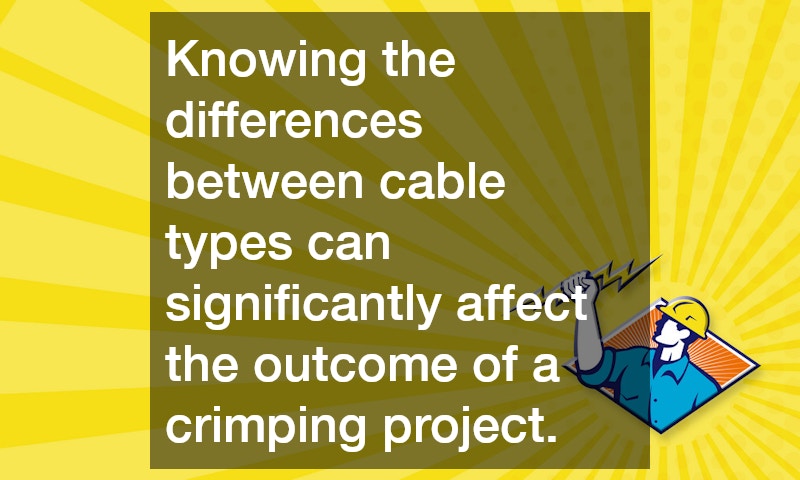Heavy duty cables are crucial in a wide range of industrial and construction applications. They are designed to carry significant electrical loads, which makes them indispensable for powering heavy machinery and equipment. Understanding the different types of heavy duty cables is essential before attempting any crimping.
Some common types include power cables, control cables, and instrumentation cables, each serving distinct functions in an industrial setting.
When selecting a heavy duty cable, factors such as current capacity, environmental conditions, and flexibility must be considered. For example, welding cables are designed to withstand high currents and harsh conditions, while mining cables are robust against mechanical damage and tension. Each type of cable has specific insulation and jacketing tailored to its application, ensuring safety and efficiency in electrical transmission.
Knowing the differences between cable types can significantly affect the outcome of a crimping project. Inadequate knowledge can lead to selecting an inappropriate cable for a job, which might result in electrical failure or hazards. Hence, taking the time to understand the specifications of heavy duty cables will save time, resources, and enhance the overall success of electrical installations.
The Importance of Using Proper Tools
Using the right tools is paramount when crimping heavy duty cables to ensure a reliable and efficient electrical connection. Crimping tools for heavy duty applications are typically robust and designed to handle thicker wires and high pressures. These tools facilitate the creation of tight connections that resist vibration, tension, and other physical stresses that can compromise an electrical system.
Incorrectly crimped connections can lead to increased electrical resistance, which in turn can cause overheating, energy loss, and even fires. To avoid such dangers, it is essential to select crimping tools that match the cable size and type perfectly. Manufacturers provide various dies and jaws that accommodate different cable diameters, making it critical to verify compatibility beforehand.
Furthermore, regularly maintaining and calibrating your crimping tools ensures consistent performance. Keeping tools sharp, clean, and in good condition minimizes the risk of crimping errors and extends the life of your equipment. Remember, the quality of your crimping directly impacts the reliability and safety of the entire cable installation.
Step-by-Step Crimping Process
The crimping process begins with preparing the heavy duty cable. Strip the cable to the appropriate length, ensuring there is no damage to the conductor strands. It’s essential to measure accurately, as over-stripping can lead to weak connections and under-stripping can prevent the terminal from fitting properly. After stripping, twist the strands gently to keep them neat and prevent fraying.
Next, choose the proper terminal and insert it into the crimping tool. Ensure that the terminal is aligned correctly before applying pressure, as misaligned terminals can cause ineffective crimps. Apply even pressure to crimp the terminal onto the cable’s conductor, securing it firmly. The objective is to make a mechanical and electrical connection that can withstand stress and vibrations without succumbing.
Inspecting the crimped connection is the final step in ensuring it meets the required standards. Check for visible defects, such as uneven crimps or exposed wires, and conduct a pull test to assess its strength. If the connection does not pass inspection, it may need to be redone, emphasizing the importance of precision throughout the crimping process. A well-crimped connection enhances safety and conductivity in any heavy duty cable application.
Common Mistakes and How to Avoid Them
One common mistake is failing to use a crimping tool designed for heavy duty cables, leading to weak or unreliable connections. Such errors are often due to a lack of understanding of the importance of tool-to-cable compatibility. Different crimping tools are designed to handle specific types of cables, and using the wrong one can cause the terminal to fit improperly.
Another mistake involves incorrect stripping of cables. Stripping too much insulation off a cable can expose the conductor excessively, leading to short circuits or cable failure. Conversely, stripping too little may prevent the terminal from fitting securely. Both scenarios underscore the importance of accurately following the cable preparation guidelines.
Lastly, neglecting to inspect the final crimped connection can lead to overlooking flaws that could compromise the system. Regular inspections and quality control should be an integral part of the crimping process. It helps identify and correct mistakes before they escalate into bigger issues, ensuring that each heavy duty cable connection functions optimally.
The Role of Safety in Crimping Heavy Duty Cables
Safety is a critical concern when crimping heavy duty cables, as improper handling can lead to severe consequences. Ensuring that the workspace is organized and free of hazards can prevent accidents during the crimping process. Proper safety gear, such as gloves and eye protection, should always be worn to safeguard against any unforeseen incidents.
Regular training and staying updated on best practices empower individuals to carry out crimping tasks correctly. Adherence to safety standards not only protects individuals but also ensures the integrity and reliability of the electrical system as a whole. Remember, even a minor oversight could escalate into a significant issue, making cautious attention to detail non-negotiable.
Moreover, environmental factors such as temperature and humidity can affect cable performance. It is crucial to account for these conditions during installation, ensuring that the chosen heavy duty cables are rated for the specific environment. Taking these precautions supports longevity and functionality, ultimately making the crimping process successful and the electrical system robust.



